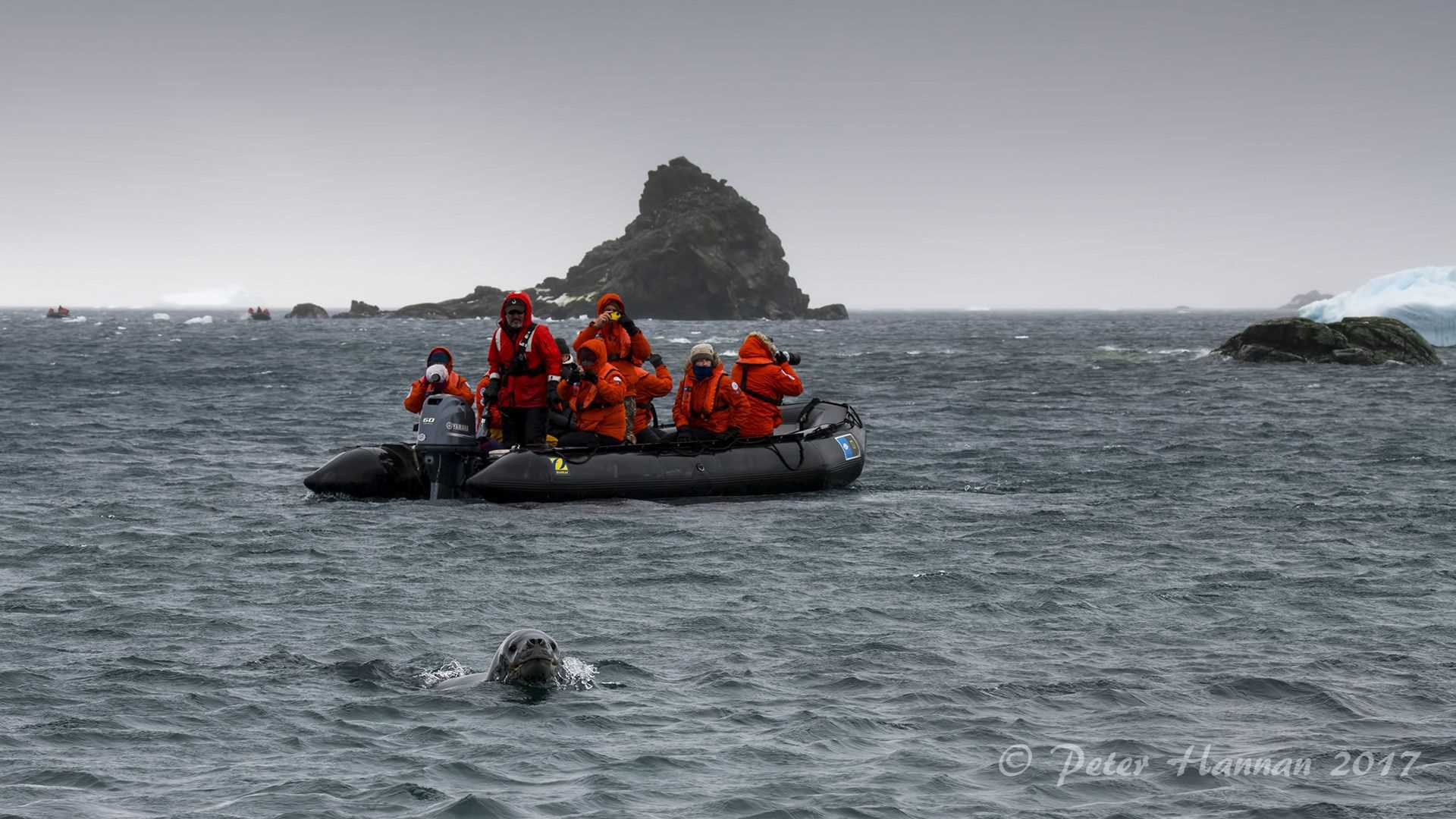For the first time in a decade National Geographic Explorer sailed to the western extent of the South Orkney Islands, bound for Coronation Island. Favorable wind conditions on our passage from South Georgia presented this rare opportunity. On arrival, conditions were less inviting with strong wind creating challenges within our anchorage. First order of business was to deploy the depth sounding Zodiac. Chief mate Aaron Wood traveled back and forth in the inlet to gather bathymetric data for our anchorage. Next, our fleet of Zodiacs was deployed to explore this rarely visited piece of our planet. It’s hard to believe that so many chinstrap penguins can survive in such a harsh environment—120,000 to be precise. From the slopes of ice all around us, we also managed to pick out a small handful of Adélie penguins, a new species for most of us.
The stormy water moved a few large icebergs around our anchorage, after which a few lucky Zodiacs spent some time watching leopard seals patrol the penguin colonies. One of our undersea specialists, Peter Webster, gathered some fabulous video of a female leopard seal swimming, so we all got to share in the experience.
In the afternoon, naturalist Jamie Coleman gave us a rundown of all of the Antarctic seals. He played recordings of each species to get us thinking about the soundscape that is part of this amazing cold and productive environment. Next, it was back to the mud room for our decontamination: Part Two! It’s always an exercise to get this done, but it’s an important part of our commitment to keeping Antarctica as pristine as possible.
Before bed, we celebrated another very special, once-in-a-lifetime event. One of our guests, Amelia, turned 10 years old! She celebrated with a special birthday party, even the captain attended.
The standout event though, at the end of the day, was the beautiful South Orkneys. A rare and special opportunity that gave us stories to share and a taste of true Antarctic weather.






